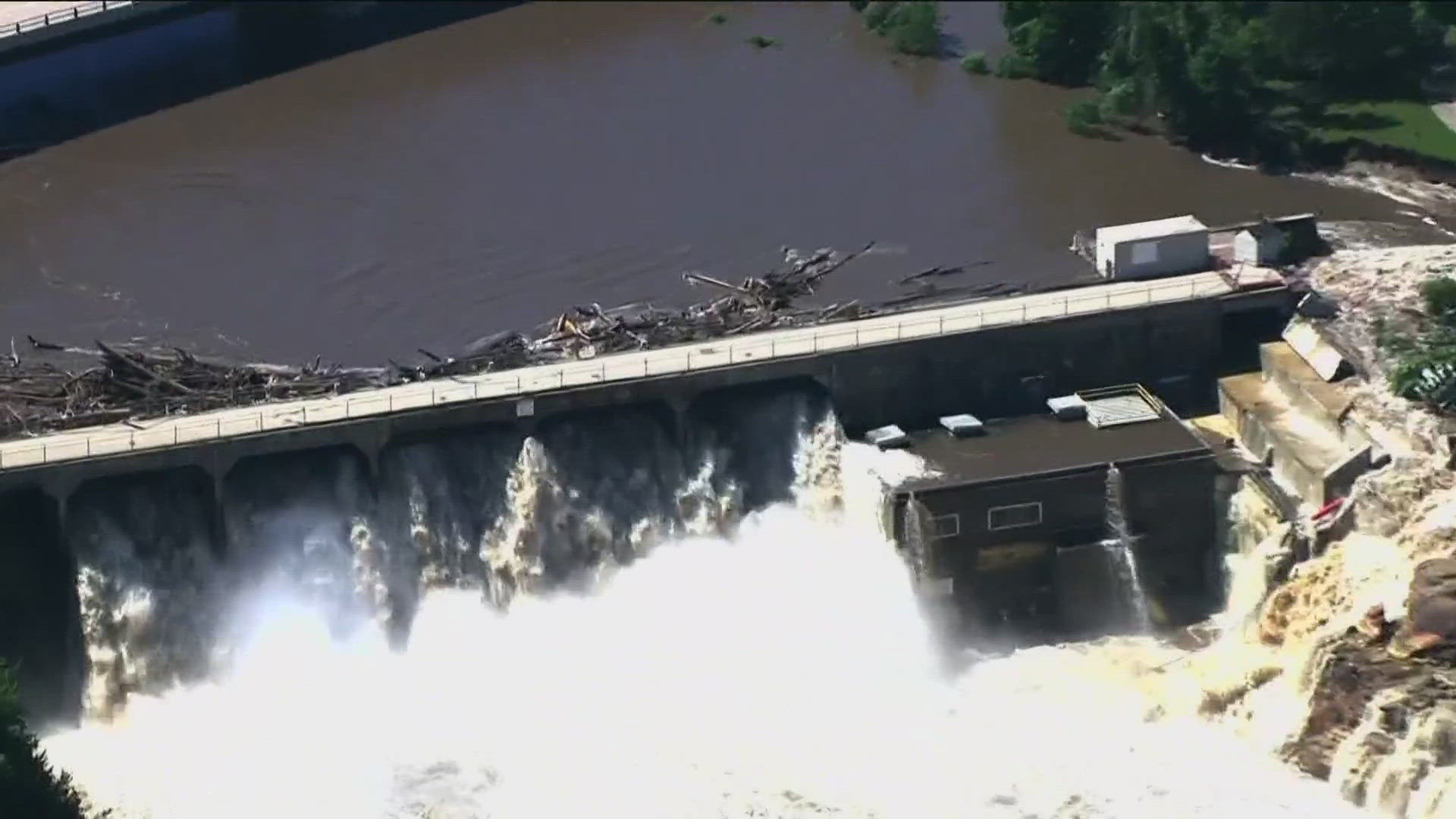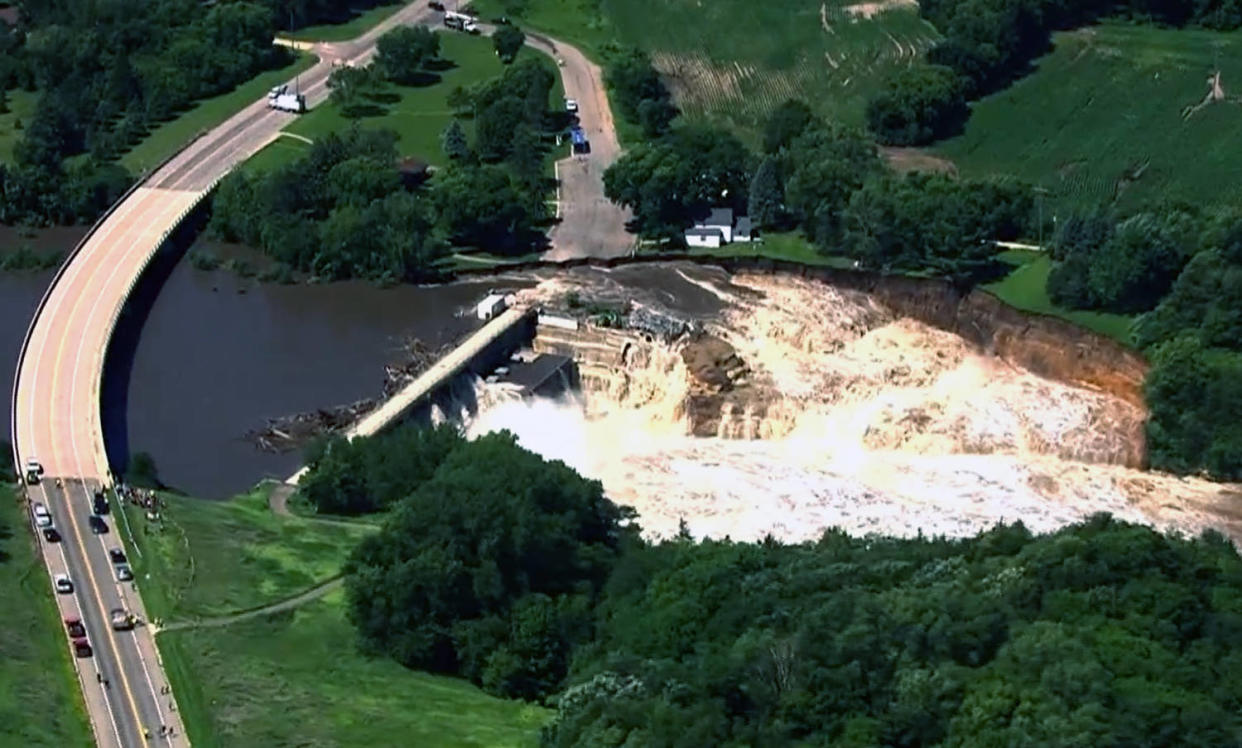Historical Context of the Rapidan Dam Failure
Rapidan dam failure – The Rapidan Dam was a concrete gravity dam constructed across the Rapidan River in Madison County, Virginia, United States. Completed in 1902, the dam was designed to provide water supply to the city of Richmond, Virginia. The dam was 1,850 feet (560 m) long and 115 feet (35 m) high.
The Rapidan Dam, a historic landmark in Minnesota, holds a somber memory of its catastrophic failure in 1938. Explore the intriguing history of this dam and its enduring legacy by visiting rapidan dam mankato mn. This site offers a comprehensive account of the dam’s construction, the devastating flood it unleashed, and its subsequent reconstruction, serving as a poignant reminder of the enduring impact of engineering marvels and the fragility of human structures in the face of nature’s forces.
The geological conditions at the site of the dam were complex. The dam was built on a foundation of granite gneiss, which is a type of rock that is prone to weathering and erosion. The dam was also located in a seismically active area. In 1897, a magnitude 5.8 earthquake had occurred in the area, and there were concerns that another earthquake could cause the dam to fail.
The tragedy of the Rapidan Dam failure reverberates through history, a stark reminder of the fragility of human constructions. Yet, it is not an isolated incident. Across the world, other dams have crumbled, including the infamous Mankato Dam failure.
While each failure holds its own unique narrative, they collectively weave a tapestry of lessons learned, underscoring the importance of meticulous engineering and unwavering vigilance in the face of nature’s unpredictable forces.
The weather events that triggered the dam’s collapse were a series of heavy rains that occurred in the summer of 1902. The rains caused the Rapidan River to rise rapidly, and the water level behind the dam reached a record high. On August 19, 1902, the dam failed, releasing a wall of water that flooded the valley below.
Impact of the Rapidan Dam Failure
The collapse of the Rapidan Dam had a devastating impact on the surrounding area, both in the immediate aftermath and in the long term.
Immediate Effects, Rapidan dam failure
In the immediate aftermath of the dam’s collapse, a wall of water surged downstream, destroying everything in its path. Homes, businesses, and infrastructure were swept away, and dozens of people were killed. The floodwaters also caused extensive environmental damage, destroying wildlife habitat and polluting the river.
Long-Term Consequences
The long-term consequences of the Rapidan Dam failure were also significant. The destruction of the dam and the subsequent flooding caused extensive economic losses, both in terms of property damage and lost productivity. The environmental damage caused by the floodwaters also had long-term impacts, affecting the local ecosystem and the livelihoods of people who depended on the river.
Lessons Learned
The Rapidan Dam failure was a major tragedy, but it also led to important lessons being learned about dam safety. The failure of the dam highlighted the need for stricter regulations and improved dam maintenance practices. As a result of the Rapidan Dam failure, dam safety regulations were strengthened, and new technologies were developed to improve the safety of dams.
Case Study of the Rapidan Dam Failure

The Rapidan Dam, a concrete arch dam constructed in 1905, was a critical water supply infrastructure for the city of Charlottesville, Virginia. However, a series of engineering flaws and human errors led to its catastrophic collapse in 1928, resulting in the loss of lives and extensive damage.
Timeline of Events
- 1905: Construction of the Rapidan Dam completed.
- 1918: First signs of seepage and cracking observed at the dam’s base.
- 1926: Engineers recommended repairs to address the seepage issue.
- 1928: Despite warnings, repairs were not carried out due to funding constraints.
- August 2, 1928: The dam collapsed after heavy rainfall, releasing a torrent of water that flooded downstream areas.
- Aftermath: 11 lives were lost, and significant damage was caused to property and infrastructure.
Engineering Design Flaws
- Inadequate Foundation: The dam was built on a weak and porous limestone foundation, which allowed for water seepage and erosion.
- Insufficient Drainage: The dam lacked proper drainage systems to relieve hydrostatic pressure, leading to the accumulation of water behind the structure.
- Overtopping: The dam’s spillway was too small to handle the volume of water during heavy rainfall, causing the water to overtop and erode the dam’s crest.
Human Error and Negligence
- Delayed Repairs: Despite repeated warnings about the dam’s deteriorating condition, repairs were postponed due to financial constraints, demonstrating a lack of foresight and prioritization.
- Inadequate Inspection: Regular inspections of the dam were not conducted thoroughly, allowing critical defects to go unnoticed.
- Lack of Emergency Preparedness: There was no established emergency plan in place to respond to a dam failure, leading to chaos and confusion during the disaster.
The cascading torrent of the Rapidan Dam failure left an indelible mark on the landscape, forever etching its story into the annals of history. The reverberations of that fateful day still linger, even in distant Blue Earth, Minnesota , where the echoes of the disaster continue to resonate, reminding us of the fragility of our infrastructure and the importance of vigilance.
As the waters raged relentlessly, the rapidan dam failure unleashed a torrent of destruction. The rapidan dam failure , a tragic event in history, serves as a poignant reminder of the devastating consequences that can arise from engineering mishaps. The aftermath of the rapidan dam failure left a trail of shattered lives and communities, forever etched in the annals of human memory.
The catastrophic failure of the Rapidan Dam sent shockwaves through the region, leaving behind a trail of devastation. Its once-impressive structure, located in the heart of Rapidan Dam , lay in ruins, a testament to the destructive power of nature.
The collapse triggered a torrent of water that surged through the surrounding valleys, sweeping away everything in its path.
